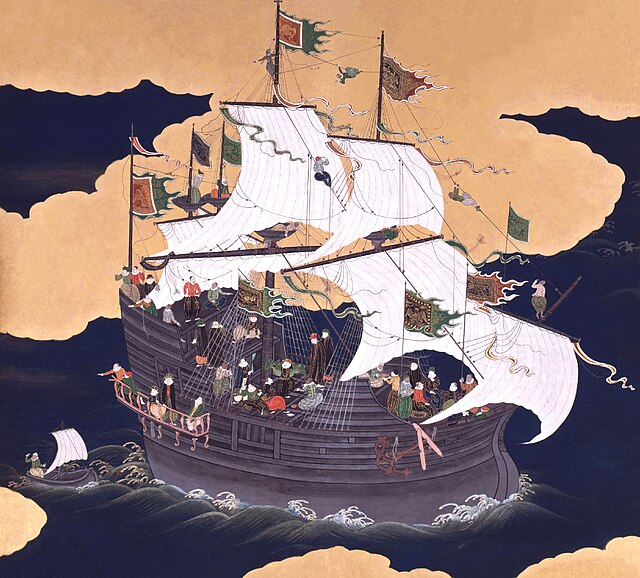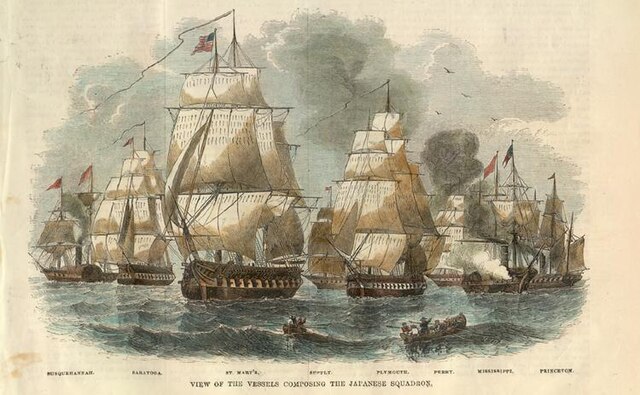The Black Ships was the name given to Western vessels arriving in Japan in the 16th and 19th centuries.
Japanese print from 1854 describing Commodore Matthew Perry's "Black Ships".
Brooklyn Museum – Commodore Matthew Perry's "Black Ship"
Portuguese black carrack in Nagasaki, in the early 17th century.
Commodore Perry's fleet for his second visit to Japan in 1854.
A carrack is a three- or four-masted ocean-going sailing ship that was developed in the 14th to 15th centuries in Europe, most notably in Portugal and Spain. Evolving from the single-masted cog, the carrack was first used for European trade from the Mediterranean to the Baltic and quickly found use with the newly found wealth of the trade between Europe and Africa and then the trans-Atlantic trade with the Americas. In their most advanced forms, they were used by the Portuguese for trade between Europe and Asia starting in the late 15th century, before being gradually superseded in the late 16th and early 17th centuries by the galleon.
The large carrack, thought to be the Santa Catarina do Monte Sinai, and other Portuguese carracks of various sizes. From painting, attributed to either Gregório Lopes or Cornelis Antoniszoon, showing voyage of the marriage party of Princess Beatrice of Portugal, Duchess of Savoy in 1521.
c. 1558 painting of a large carrack attributed to Pieter Bruegel the Elder
Replica of a small 15th-century or 16th-century carrack at Vila do Conde, Portugal
Naval battle involving carracks and galleys








